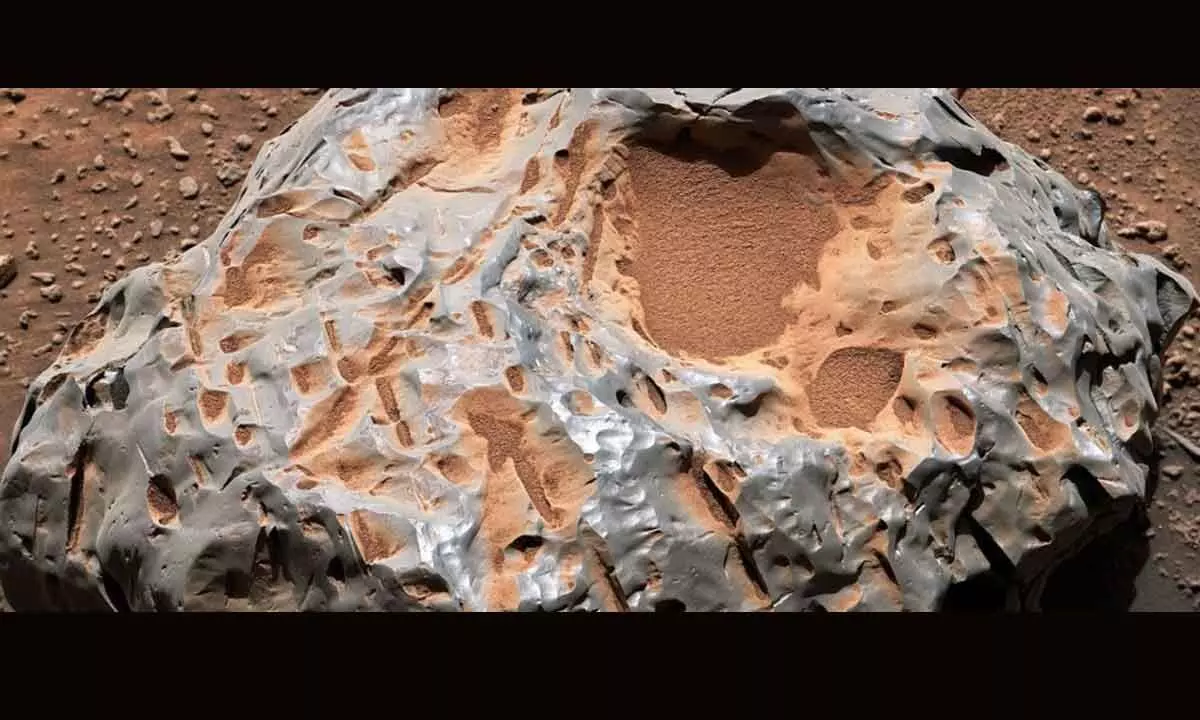Amazing Metal Meteorite Discovered By NASA Rover On Mars

NASA's Curiosity spotted iron-nickel meteorite nicknamed "Cacao" on 28 Jan 2023.
- The meteorite, known as Cacao, is primarily composed of iron and nickel.
- The meteorite is dark grey and appears metallic, in contrast to the reddish colour of oxides on the Martian surface.
MSL Curiosity is investigating and exploring Mars. On Mars' Gale Crater's central peak, Mt. Sharp, the high-tech rover is presently investigating the sulphate-bearing unit. Unexpectedly, a metal meteorite was found in its way.
The meteorite, known as Cacao, is primarily composed of iron and nickel. Cacao is only approximately 30 cm (1 ft) across, so it isn't particularly big. Visually, cacao stands out from its surroundings. The meteorite is dark grey and appears metallic, in contrast to the reddish colour of oxides on the Martian surface. Additionally, it is round and smooth, which are clear indications that it was once in an atmosphere.
The picture was created by combining six separate Mastcam photos. On January 27, 2023, the 3,724th Martian day (or sol) of the mission, Curiosity took the pictures. To match the brightness as viewed by human eyes on Earth, the image's colours have been adjusted.
Regmaglypts are the name for the grooves and pits. Iron meteorites are particularly interesting because of them. When cacao passed through the atmosphere, they developed.
Despite having a considerably weaker atmosphere than Earth, Mars still generates enough friction to heat the meteorite's surface. The heated gas vortices that melted the rock as it passed through the atmosphere are probably what caused the regmaglypts.
Since its August 2012 landing in Gale Crater, the spacecraft Curiosity has discovered a number of meteorites. Nobody is certain of the meteorite's length of time on the surface of Mars.
Where the laser of the device hit the rock is indicated by the grid pattern of five little white dots.
The rarest sort of meteorites, which only makes up roughly 6% of observed falls, are iron-nickel meteorites. However, they are overrepresented in collections because to their recognisable aesthetic look. That's because they have a higher chance of surviving atmospheric entry and are more weather-resistant, even on Mars. The cores of broken planetesimals that formed in the early Solar System are where the majority of iron-nickel meteorites originate. When they were molten, such items were big enough to distinguish one from another. Like Earth, they developed a thick iron and nickel core.
Meanwhile, planetesimal life was dangerous, and many of them were fragmented into asteroids. That is most likely Cacao's past. That is what makes meteorites, especially metal ones, so interesting from a scientific standpoint. They can be traced back to the Solar System's formation billions of years ago.
Furthermore, MSL Curiosity only finds cacao to be an intriguing oddball. Studying Gale Crater, Mt. Sharp, and features like the sulfur-bearing unit are all part of Curiosity's mission. Salty minerals that generated in the presence of water are abundant in the structure.
Next Story



















